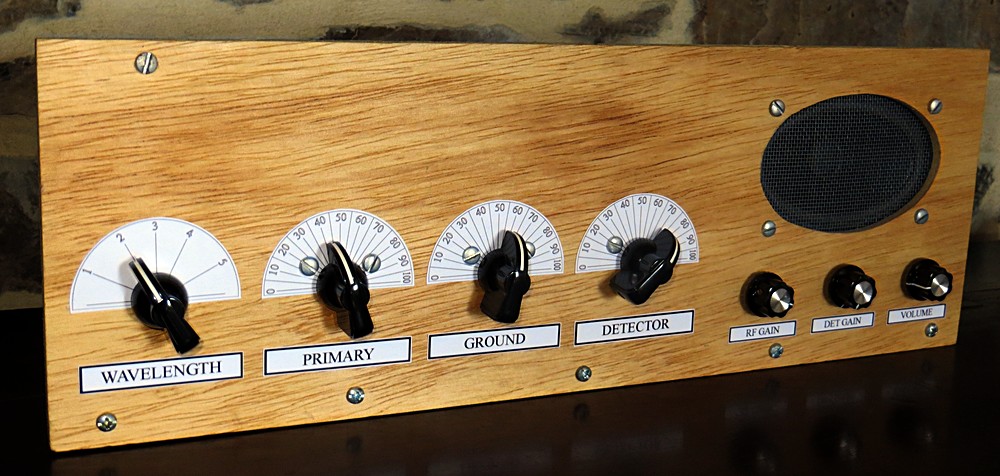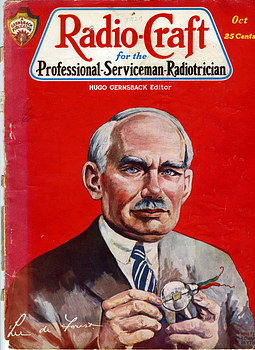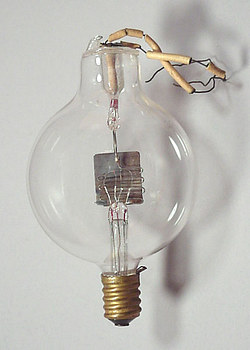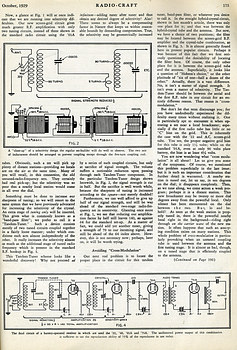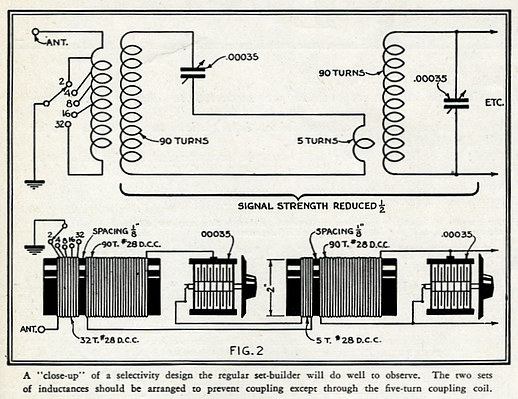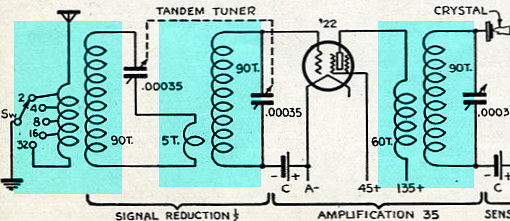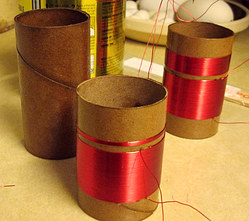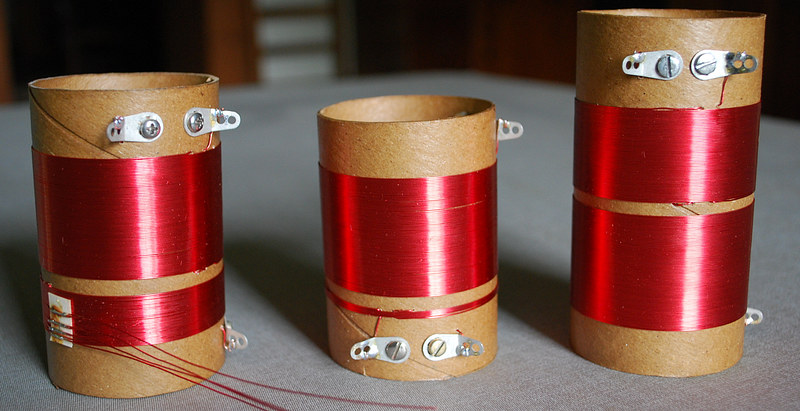The Experimental Radio Project
|
|
| This is an account of how a radio project
evolved into something different then what was intended. It's merely presented for your entertainment. I don't
recommend you build this set, it doesn't work all that well
for the amount of work involved, though it is fun to operate
and is extremely selective if you don't use a ground
connection.
If you want to build a set, look at the Ferret Ferrite
pages on this site. |
|
|
|
The experimental Tuned Radio Frequency receiver.
|
|
Some time in 2012 I obtained a copy of the
October 1929
issue of Radio Craft Magazine. On the cover
is Lee de Forest, the
inventor of the triode vacuum tube. He
is holding the invention in the illustration. |
This device, named the "Audion," made modern electronics possible.
It was the first triode vacuum tube, patented by Lee de
Forest in February of 1908.
|
On page 174 was found "The
Cooperative Radio Laboratory" which was a monthly feature.
On page 175 was an interesting schematic.
(See full article here.) |
|
|
|
|
|
What interested me was the "TANDEM TUNER," but then I saw, right at
the top center of the schematic, a crystal diode! This was a crystal set with
radio frequency and audio amplifiers. I decided I'd build
a modern version with transistors instead of vacuum tubes.
It should
be (have been) a piece of cake! |
|
|
|
|
|
|
The TANDEM TUNER. Notice, the article states, "a selectivity design the regular
set builder will do well to observe." |
|
|
|
|
| There were three coils needed. The coil data is shown in
the diagram, and a drawing of the
coils was conveniently provided in the illustration of the TANDEM TUNER. The only
change made was to use 75 turns of wire instead of 90, and .00039
variable capacitors
as opposed to the .00035 used in the article). I used 26 gauge wire. |
|
| Parts were ordered from various online sources
and work began
on the coils. 2" cardboard tubes
were cut and polyurethaned, the coils were wound
and then polyurethaned again. |
|
|
|
|
A team of Celestial Mechanics worked tirelessly to create these beautiful coils. |
|
|
|
|
|
|
